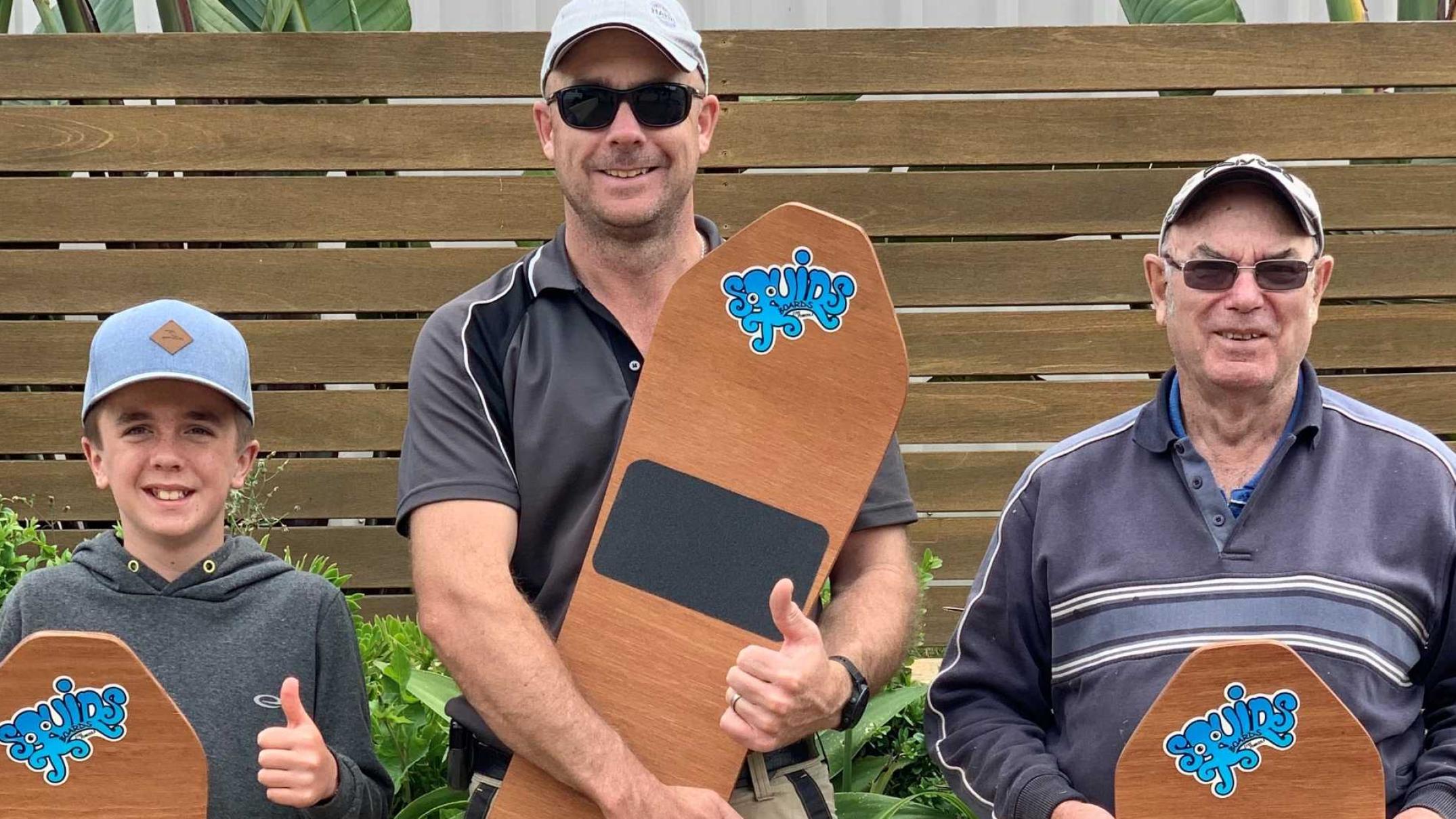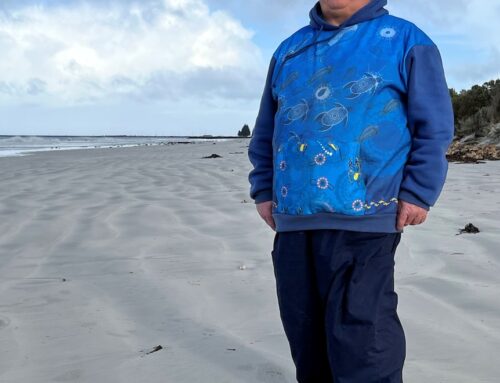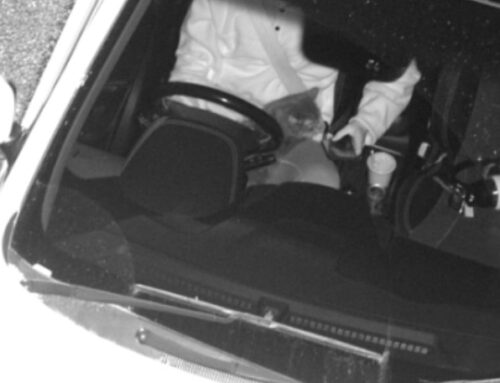Port Lincoln schoolboy Clay Bertram spent his summer break setting up a small business making and selling sandboards.
Key points:
- Clay Bertram could be a budding business tycoon following a successful school-holiday project making and selling sandboards
- He follows in the footsteps of his dad and grandfather who also made boards and waterskis in their wood workshop
- Clay has sold more than 80 boards this summer, meeting his goal of funding the purchase of a Fender guitar — and he has no plans to stop there
The 11-year-old was motivated because he wanted to buy a new guitar — a Fender Ultra Stratocaster in Cobra Blue.
Clay represents the third generation of his family to make boards.
“Dad made them back in the early ’90s, and he’s like, ‘Why don’t you make them? I made them the same age as you, so they should be a fun thing to make’,” he said.
Sandboards are similar to snowboards in shape and how you use them, except they tackle sandhills rather than snow fields.
A family tradition
Clay was helped by his father Michael and grandfather John Bertram, a semi-retired cabinet maker who built the shaping mould originally for skis in the 1960s.
“I started messing around with making skis when I was hanging with some Norwegians at Cooma [NSW] and they were doing long distance races on Lake Jindabyne, trying to go faster,” John Bertram said.
“We were experimenting with the length of the skis and making our own.”
When he moved back to Port Lincoln in the 1970s he joined the waterski club and made a mould which clamps the plywood skis to give them a curve.
“The ski and sandboard shape is basically the same, except the boards are wider,” Mr Bertram said.
When his sons Shane and Clay’s dad Michael wanted some pocket money they began making sandboards in the 1980s.
“They had a little problem with them breaking, so I decided to make a mould up and sort of make original ones, but just basically for our kids and a few of our friends, and that’s where it originally started.”
A ‘truly spectacular’ sport
Sandboarding is thought to date back to ancient Egypt with modern boards developed in the 1970s.
The International Sandboarding and Sandski Association, based in Peru, holds a world championship every two years.
One of the most popular Australian spots for sandboarding is at Stockton sand dunes, near Port Stephens, under guidelines from National Parks and the Worimi people.
Port Stephens 4WD Tours office manager Mark Murphy said the Stockton sand dune system was the largest moving sand dunes in the Southern Hemisphere and 70 per cent of its customers were international tourists pre-COVID-19.
“Before COVID it’s safe to say we would have had more than 1,000 people coming to do sandboarding each week,” Mr Murphy said.
“If you’re from Korea or China, it’s truly something spectacular for the international tourist to see the 100-metre sand dunes, the Pacific Ocean, marine life, fish life, dolphins then the sand sliding.
“It’s quite an adrenalin rush for them.
A family affair
It was the family market that Clay tapped into with his Squids Boards — and even the construction is a family affair.
Clay utilised his pop’s previous ski mould that has lay dormant for about 30 years.
While he is not permitted to use some of the more dangerous power tools in the workshop, he has learned woodworking, marketing and business skills.
“The machinery’s here and it’s teaching him basic woodworking skills which is not going to go astray,” John Bertram said.
“He does most of it all himself.”
Clay the CEO
With the three generations working together on the business, it means plenty of quality family time — but there is only one boss.
“[Clay] calls himself the CEO,” John Bertram said.
Squids Boards, has a growing list of stockists from Port Lincoln to Ceduna and Whyalla with plans to take them to Coober Pedy.
He has now sold more than 80 boards, and the business has a gross turnover of more than $20,000 since October.
Clay now has the guitar on order — but is keen to continue the sandboarding business.
“I might just sell them in stores everywhere,” he said.




